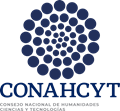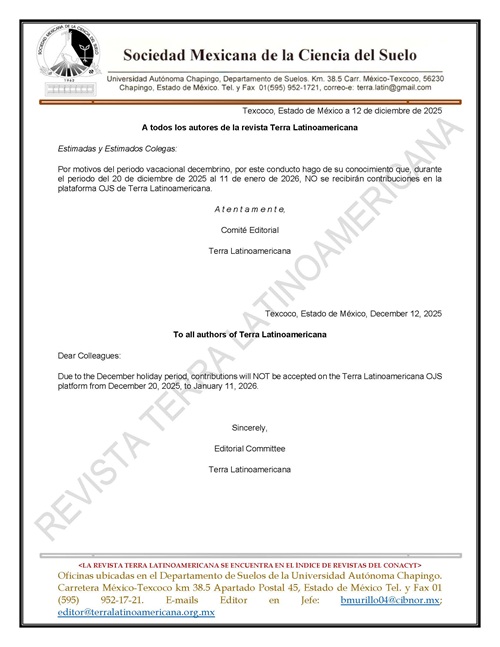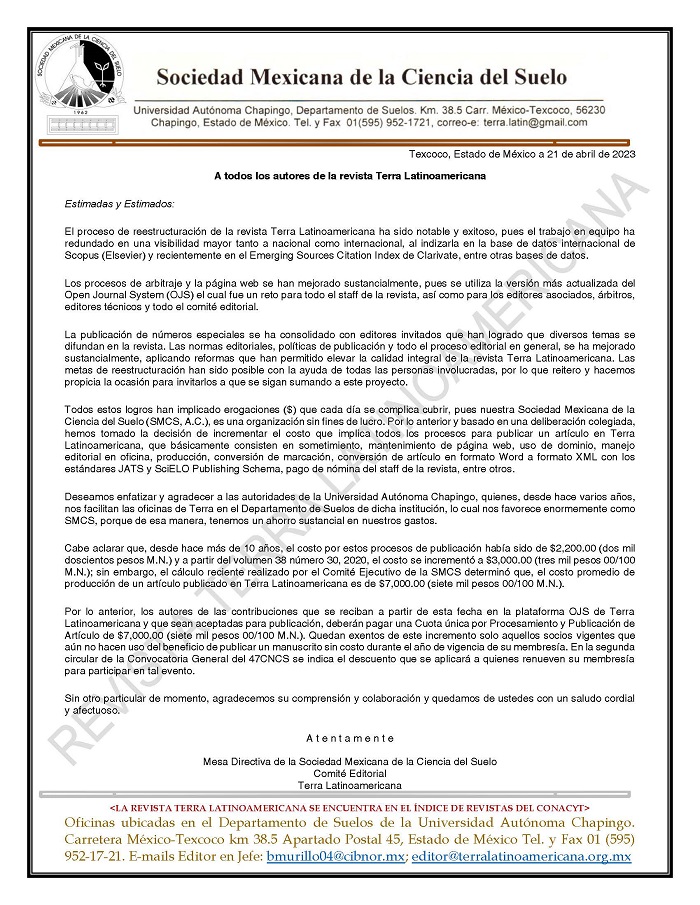Effect of organic and inorganic sources of nutrition mixed with biofertilizers on melon fruit production and quality
DOI:
https://doi.org/10.28940/terra.v39i0.904Keywords:
Azospirillum, Bacillus, estiércol bovino, RPCVAbstract
The current demand for food means that large quantities of chemical fertilizers are used in horticultural production systems, leaving soils deteriorated with little fertility in the long term. Thus, the objective of this research was to evaluate organic and inorganic sources of nutrition combined with biofertilizers in their ability to provide nutritional elements to melon crop and in yield and quality responses compared to chemical fertilization. The evaluated treatments were T1 = 140 UNE; T2 = 120 UNE; T3 = 80 UNE+B; T4 = 60 UNE+B; T5 = 80 UNQ+B; T6 = 60 UNQ+B and T7 = 120-80-00 based on chemical fertilizer. A completely randomized blocks design with three repetitions was used, finding that T3 and T5 reduced the application of chemical fertilizer by 33% with respect to the recommended dose used in the Lagunera Region and improved yield by 11 and 9% respectively. Therefore, organic or chemical fertilizers mixed with biofertilizers can be a viable alternative to maintain and/or increase melon yield and reduce the use of chemical fertilizers in vegetable production systems at the same time.
Downloads
Publication Facts
Reviewer profiles N/A
Author statements
- Academic society
- Terra Latinoamericana
- Publisher
- Mexican Society of Soil Science, C.A.
















